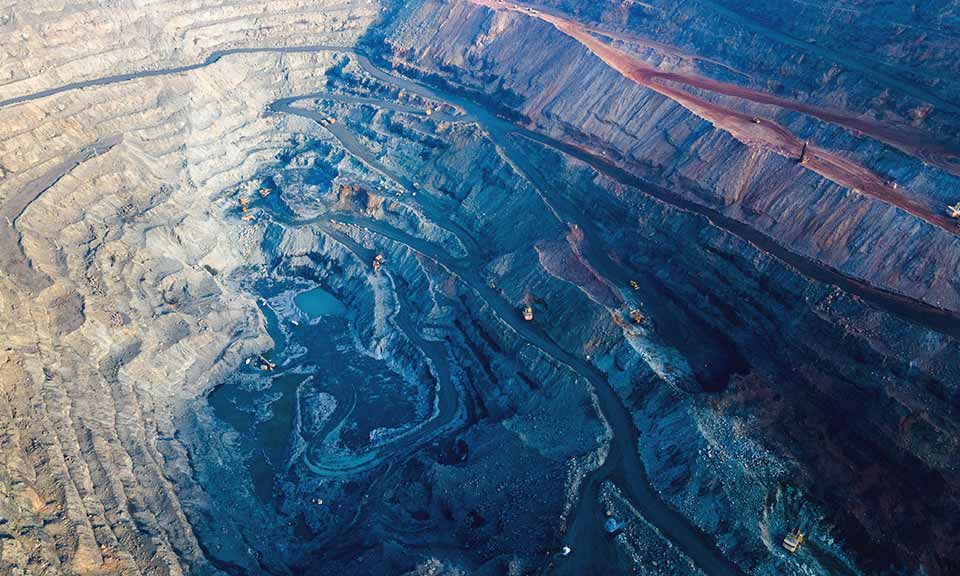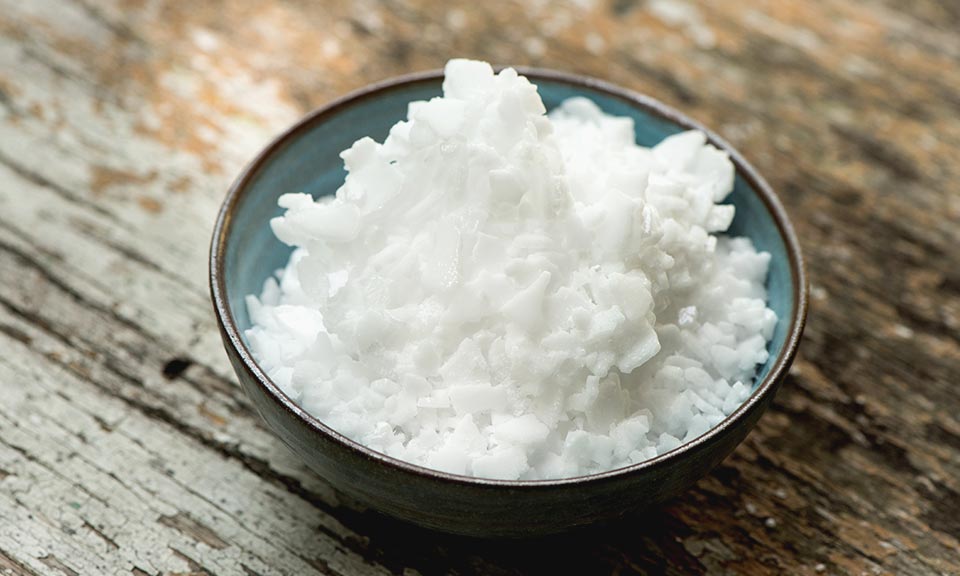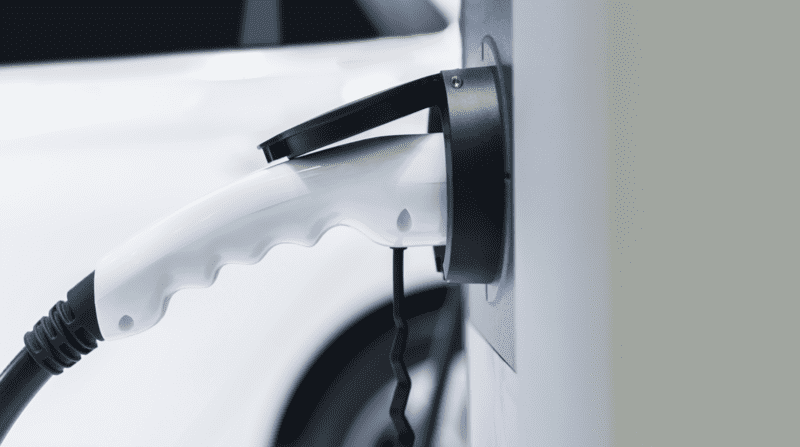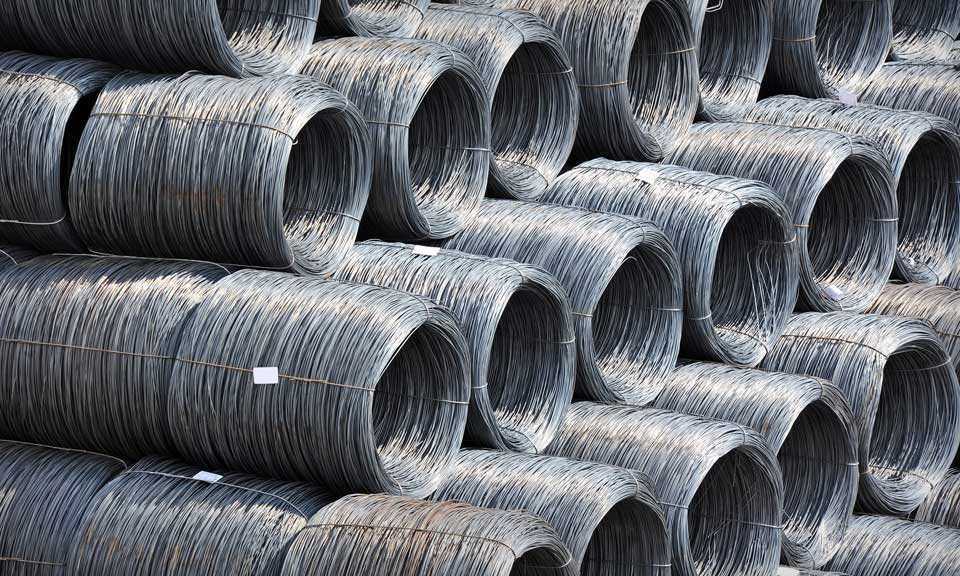Sustainability in focus at S&P Global Commodity Insights Aluminum Symposium

Demand for aluminum is set to rise in the coming decades due to the metal’s role in energy transition technologies.
The International Aluminum Institute estimates demand for aluminum could rise 80% by 2050 from a 2018 baseline demand of 95 million mt, with the material having applications in solar and wind energy, electric vehicles, and sustainable packaging.
And as consumers place a sharper focus on supply chain sustainability, spurred by in-house sustainability targets, federal incentives and larger global efforts to decarbonize, demand for "green aluminum" and sustainable products is set to grow sharply, according to presenters at the 2024 S&P Global Commodity Insights Aluminum Symposium, held Jan. 28-30 in Scottsdale, Arizona.
US primary, secondary aluminum production needed amid growing demand
There is a perception in the US aluminum market that there is competition between primary and secondary aluminum production, but demand for both is growing and both are needed, Steve Fisher, CEO of aluminum recycler and producer Novelis, said during a fireside chat Jan. 29.
"If you believe in the projections of aluminum growth and why aluminum is winning, it’s winning because it’s taking share away from other materials," Fisher said. "If you continue to believe aluminum wins and takes share, we’re always going to need both and we’re going to need to see primary grow and we’re going to need to see the recycled content grow as well."
And with this expected growth in demand, it is important for legislators and others that are thinking about the need for aluminum manufacturing in the US to realize a lack of primary production is not going to be solved by recycled content, Fisher said.
"We’re obviously going to do our part in the recycled content piece but we’re going to work with primary producers on ways to decarbonize upstream production," Fisher said, adding this is needed to create aluminum with a zero-carbon footprint. "We absolutely have to get more strategic and we have to get the mindset of the value chain winning together."
US energy policy advancements, long-term tax credits needed to build new capacity
For the US to have a globally competitive primary aluminum industry, the federal government needs to make some advancements on energy policy and provide longer-term planning certainty for producers to build or restart new capacity, industry experts said during a panel discussion Jan. 29.
"I think the US government is trying to support the domestic production of aluminum. All the efforts that have been done to date are helping to offset the losses on the domestic smelters, but it’s not enough to incentivize growth," said Renato Bacchi, executive vice president and chief commercial officer at Alcoa. "Growth will come with access to fairly priced energy."
Part of the issue is the highly fragmented structure of the US energy sector itself, said Jake Skelton, CEO of EGA America. While there may be some incentives in certain areas of the country, none are on a long-term basis, he said, raising the risk of investment.
"These aren’t small investments, you’re talking $5 billion-$10 billion with 10- to 20-year paybacks," he added.
Another issue facing smelters in the US is that as the country retires older coal-based generating assets, the grid becomes more stressed in general, said Matt Aboud, senior vice president of strategy at Century Aluminum.
Because of the issues around accessing reliable, renewable energy in the US, the build out of secondary aluminum supply is expected to outpace primary production over the longer term, according to Matt Schicke, general manager of Atlantic metal sales and trading at Rio Tinto.
Not only do primary aluminum smelters need greater certainty around energy supply and costs, but there also needs to be more certainty around tax programs to incentivize increased production, said Duncan Pitchford, president of Hydro’s US aluminum metals division and head of its commercial operations in the Americas.
He said the recently announced Section 45X Advanced Manufacturing Production Credit is a step in the right direction but looking at other areas like research and development tax credit programs that go on for two or three years before sunsetting, it’s not enough time for a large-scale investment in primary production.
"I think policymakers need to understand that, yes, some of these steps that have been taken are good, they're appreciated, but they have to be durable and they have to have durability that can be backed," he said.
Supply, sorting top of mind as US aluminum scrap demand set to expand
As secondary aluminum production is expanding in North America, so does demand for recycled metals.
At the same time, as automotive production shifts more toward electric vehicles, the types of scrap being generated and sought by customers are changing, industry experts said during a panel discussion Jan. 30.
"It’s certainly been interesting over the last few years where traditional scrap that came into secondary -- UBCs, clean sheet, etcetera -- is actually more and more starting to be used by the rolling mills as they’ve put in more recycling capability," said Russell Barr, chief operating officer of metals recycler Real Alloy. "I think that’s probably forced companies like ourselves to start looking more and more down the scrap chain."
This means looking to recover metals from more contaminated scrap, Barr said, and if you are taking in more contaminated scrap, you must look at sorting systems to clean it up.
Additionally, as the types of vehicles and products produced with aluminum changes, certain grades of scrap are being favored due to buyers seeking more low-iron, high-purity grades, leading to increased demand for wheel scrap, according to Joe Tomolo, director of business development of aluminum scrap recycler Sims Alumisource.
US low-carbon aluminum premium seen necessary to decarbonize
Aluminum producers see the adoption of a US premium for low-carbon material as key in providing incentive for the industry to fully decarbonize.
"In my mind this is one of the incentives the industry needs to decarbonize," Alcoa’s Bacchi, said during a panel discussion Jan. 29. "The amount of money the industry will collectively spend to decarbonize the industry is not small and somebody will have to finance that."
According to the Department of Energy’s 2023 Pathway to Industrial Decarbonization Commercial Liftoff report, decarbonizing US aluminum production could require $10 billion-$15 billion in capital investment through 2050 to scale decarbonization technologies.
"We have got to spend a lot of money over the next years to be able to fully decarbonize and in order to have the incentive to do that, it has to be paid for," said Hydro’s Pitchford said.
Building on the success of its European low-carbon aluminum indexes, Platts, on Jan. 2, launched a new daily LCAP price assessment for the US market, using the same 4 mt maximum C02 emissions. US-LCAP covers direct and indirect emissions associated with aluminum smelting, typically considered by market participants as scope 1 and 2 emissions.
Emissions must be certified by an internationally accepted, independent organization, and market participants are expected to supply proof of such c

News
Leinster Lithium Project comprised of 23 exploration licenses Several European lithium mining/refining projects set to launch this year UK project developer and battery metals recycler Technology Minerals is to sell its exploration licenses in Leinster, Ireland, to project developer European Lithium. The London-listed company said April 22 the purchase would take place through the sales of 100% of the issued share capital of its wholly owned subsidiary and the owner of its exploration licenses LRH Resources limited. The proposed sale price is $10 million to be settled through the transfer of the equivalent value of shares held by European Lithium in Critical Metals Corp. calculated at 90% of the closing market price of the shares on the day before the signing of a heads of agreement. The shares in Critical Metals will be held in escrow until Feb. 28, 2025. LRH Resources' Leinster Lithium Project is comprised of 23 exploration licenses containing significant lithium bearing spodumene pegmatites. Technology Minerals said it will retain its 100% interest in the Asturmet project in northern Spain. "The agreement is an endorsement of our ability to identify and develop early-stage projects with significant potential," said Alex Stanbury, Technology Minerals chief executive. "It also underscores our strategy to advance early-stage projects up the value curve and attract potential buyers or partners to bring additional value to the company and its shareholders," he added. European Lithium chair, Tony Sage said that the acquisition demonstrates his company's commitment to expanding in the European lithium industry and its ability to identify and secure promising lithium properties. "This also demonstrates the value of our investment in Critical Metals Corp. As we move forward, we can utilize the investment again and again without depleting our cash reserves, he said. European Lithium, an Australia-listed mining exploration and development company is focusing on the development of the Wolfsberg project in Cezch Republic. The company is aiming to be the first and largest local lithium supplier in an integrated European battery supply chain. Several European lithium mining and refining projects are poised to launch commercial operations this year, supported by a push among original equipment manufacturers, or OEMs, to regionalize their battery supply chains and reduce dependence on imported material. On March 18, The European Council adopted the European Critical Raw Materials Act (CRMA) The regulation requires that EU capacities along the strategic raw material supply chain satisfy at least 10% of EU annual consumption of mined material, at least 40% consumption of processed products and at least 25% consumption of recycled material. The regulation also requires that no more than 65% of the EU's annual consumption of each strategic raw material at any relevant stage of processing should come from a single third country. Platts, part of S&P Global Commodity Insights, assessed lithium carbonate at $14,500/mt CIF Europe April 22, unchanged on the month, while lithium hydroxide was assessed at $14,500/mt CIF Europe on March 18, also stable on the month. Platts Connect: News & Insights (spglobal.com)

News
Nine-month production up 9.1% on year March quarter sales rise 14.4% on year Sales for 9-month period up 9.3% on year Australia's Pilbara Minerals boosted spodumene concentrate production 20.8% year over year to a record 179,006 dmt in the third quarter of the 2023 financial year, the company reported in quarterly report released April 19. The volume was also up 2% quarter on quarter and brought the nine-month total to 499,200 dmt of spodumene concentrate, 9.1% higher year on year. The company’s financial year runs from July to June. The miner said that, although there had been production challenges early in the March quarter due to adverse weather events and ore supply challenges, the P680 primary rejection facility had achieved nameplate production capacity in the second half, with a monthly production record of 80,000 dmt achieved in March. Besides the expanded production capacity of P680 with no shutdowns, the monthly record was also helped by higher ore lithium head grade and higher lithium recoveries due to operational improvements including the temporary mobile ore sorters. Pilbara said it was temporarily using mobile ore sorters to supplement ore feed and to gather in-field intelligence on the use and optimization of ore sorting technology on mine ore feed ahead of the start of commissioning of the P680 crushing and ore sorting facility in the June quarter. Sales up 14.4% on year Pilbara Lithium’s sales for the March quarter were 165,100 dmt, up 14.4% year on year and up 3% quarter on quarter. The average realized price of the quarterly sales were $804/dmt CIF China, $83.4% lower on the year and down 28% quarter on quarter. Pilbara said the quarterly sales were lower than the production volume due to the timing of shipments, with two totaling 25,900 dmt made during the first half of April. “The company continues to see ongoing customer demand for its product and is not stockpiling production volume,” it said. Sales for the nine-month period totaled 471,400 dmt, up 9.3% on the year, at an average realized price was $1,343/dmt CIF China, down 72.8% on the year. “The pre-auction sale of 5,000 dmt at $1,106/dmt SC5.5 in March reflects the ongoing demand and positive pricing for unallocated production volume,” Pilbara said. Lithium price increases are "feeling material" when looking at the 60 days up to mid-April, Pilbara Minerals' Henderson said. Platts, part of S&P Global Commodity Insights, assessment of lithium spodumene concentrate with 6% lithium oxide content (SC6) has risen 11.3% since the start of 2024 to $1,080/mt FOB Australia April 19. Mid-Stream demo plant project on schedule The company said its Mid-Stream demonstration plant project continued to progress on schedule and budget with detailed design, and was still expected to achieve first lithium salt production in the June quarter of the 2025 financial year. Pilbara’s JV with POSCO, POSCO Pilbara Lithium Solution Co., also completed commissioning activities and started production ramp up for Train 1 of the 43 ,000 mt/year lithium hydroxide monohydrate (LHM) chemical facility in Gwangyang, South Korea, Pilbara said. It said small volumes of uncertified LHM were produced during the quarter as part of commissioning with the ramp-up to full capacity estimated within 12-18 months. The JV also continued major construction works for Train 2 at the plant, with commissioning expected to start during the second half of 2024. Platts Connect: News & Insights (spglobal.com)

News
Reduced EV sales hits home installations Tailwinds from ZEV mandate expected UK EV sales market share down in March The UK's electric vehicle charging market is facing a challenging outlook due to policy uncertainty and reduced demand for new EVs, EDF-majority-owned charging company Pod Point said April 18. Pod Point's 2023 revenue fell 11% to GBP63.8 million ($80 million) mainly due to a 38% year-on-year decline in home charge point installations to 33,513. Commercial charge point installations fell 10% to 5,231. "The market is likely to remain challenging with increased consumer uncertainty in anticipation of potential changes to UK government policy and ongoing volatility in private new EV demand," CEO Andy Palmer said. There should be "significant tailwinds", however, from the government's zero emission vehicle (ZEV) mandate, Palmer said. The legislation requires auto makers to increase zero emission car and van sales in the overall UK mix from 22% in 2024 to 38% by 2027, 80% by 2030 and 100% by 2035. UK battery electric vehicle registrations in March were up 3.8% year on year to 48,388 units, although, at 15.2%, BEVs' market share was down one percentage point year on year, according to Society of Motor Manufacturers and Traders data. National Grid ESO estimates there will be up to 37.4 million EVs on UK roads by 2050, up from just over 1 million as of end-March (not including 645,000 plug-in hybrid EVs). Pod Point CFO David Wolffe said the company expected the mix of vehicles to continue to shift to EVs on the back of more choice for consumers, "with more new battery electric models expected to be launched in 2024 at more accessible price points." A potential constraint, however, could be the UK's behind-schedule power network expansion. "The addition of an EV typically will double a household's electricity usage. This is a huge challenge at the national level. In parallel with this, there has been rapid growth in the contribution of wind and solar power to our national grid, which are both more volatile," Wolffe said. On the plus side for Pod Point and EDF, these factors may double the value of the grid flexibility market by 2030 to around GBP4 billion. The vehicle-to-grid concept sees EVs helping network operators balance their systems. "Pod Point has already established itself as an emerging player in this exciting market, delivering revenue and profit in 2023. We have delivered flex in two markets during 2023 and have signed multiple partnerships with key players, including EDF, Centrica and UK Power Networks," it said. Platts, part of S&P Global Commodity Insights, assessed battery grade lithium carbonate and hydroxide assessments at $14,500/mt CIF Europe on April 17, stable in recent weeks but down from $15,900/mt in early January. Platts Connect: News & Insights (spglobal.com)

News
China's property sector has been in shambles over the past few years and remains the biggest drag on domestic steel demand. The property market has trended downwards in the first quarter of 2024. With no major recovery signs in new home sales, China’s new home construction starts are likely to remain on the downwards trajectory in the foreseeable future. The slowing property sector has triggered debt risks locally, leading Beijing to order local governments to downsize infrastructure projects, which has also undermined the growth momentum in infrastructure steel needs, adding to the demand slump. Click here to see full-size image